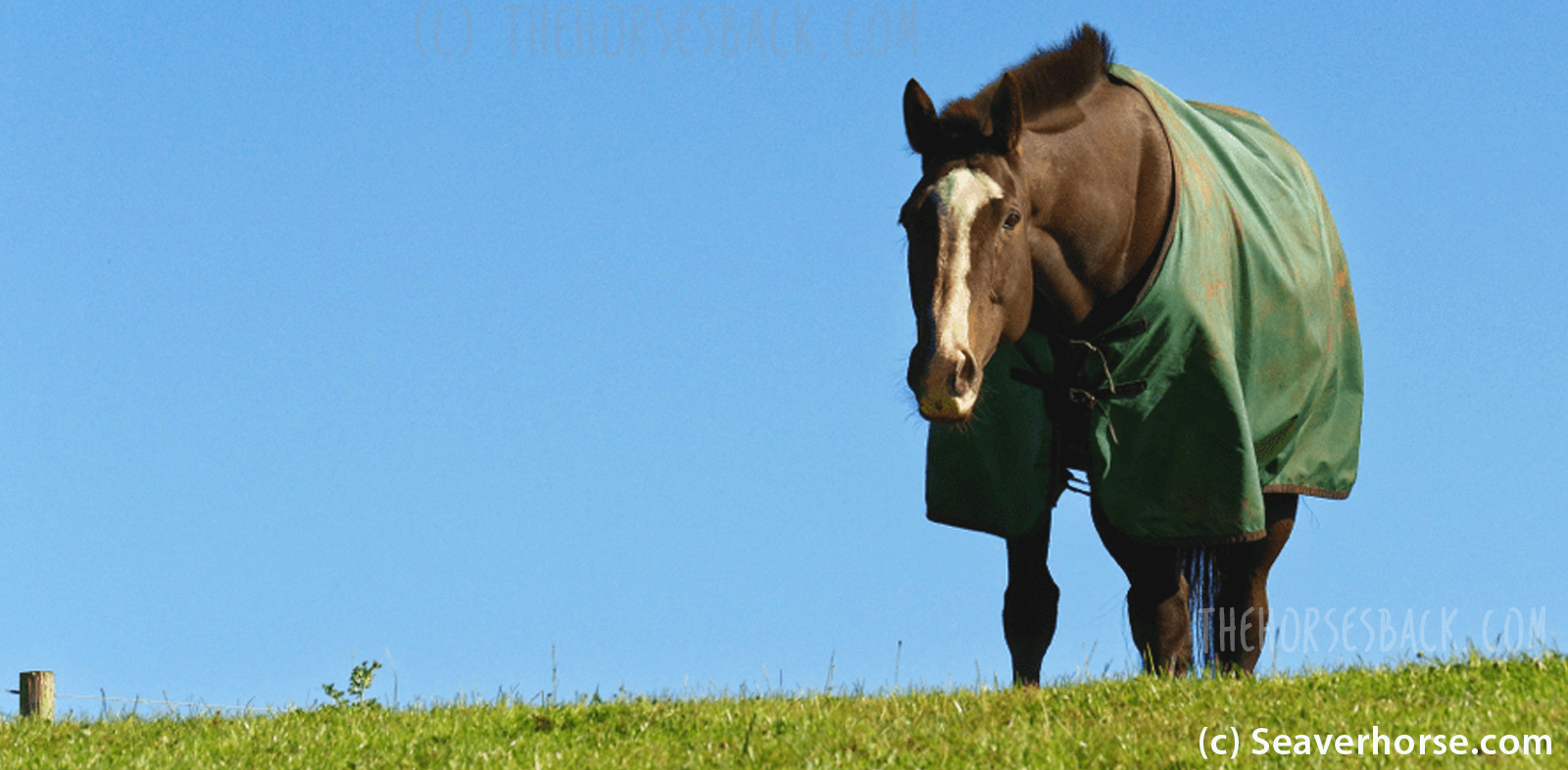
Have you come across the small rug sensors that can be attached to your horse’s rug? They collect and send weather data to your mobile, so that you can check whether your horse’s rug needs changing.
Here, I’m going to explain how rug sensors can give us an idea of how long our horses are spending in REM sleep. Even if you don’t rug your horse, there are ways you can use these sensors to check up on your horse’s quality of life.
This is particularly important if your horse is retired due to chronic arthritis or another degenerative musculoskeletal condition.
© All text copyright of the author, Jane Clothier, https://thehorsesback.com. No reproduction of partial or entire text without permission. Sharing the link back to this page is fine. Please contact me for more information. Thank you!
First, What Do Rug Sensors Tell Us?
Rug sensors are a thermometer, barometer and a movement sensor rolled into one unit.
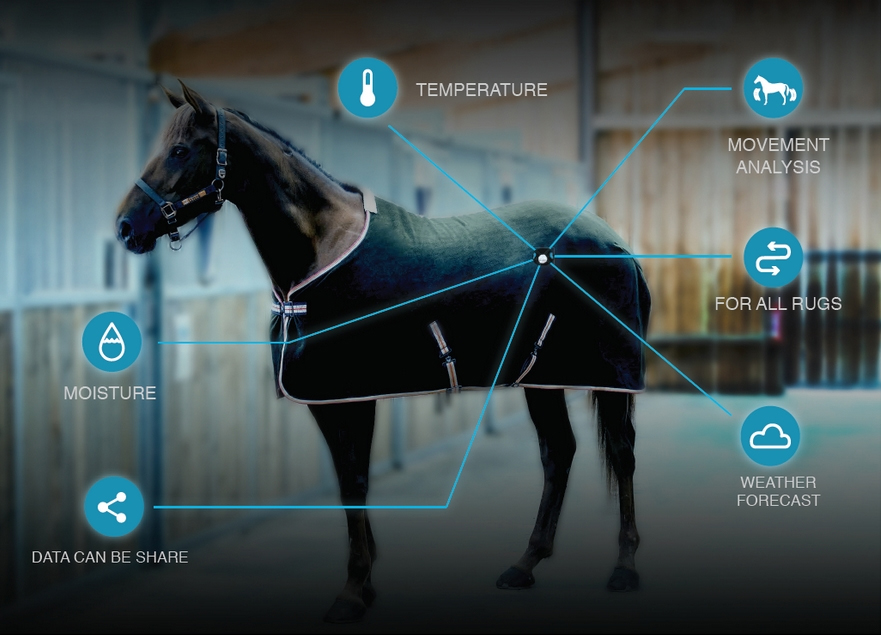
This means that they can measure air temperature and humidity (both inside and outside the rug), and your horse’s basic movement patterns over time. The data is sent to an app on your mobile, so you can decide whether it’s time to swap or remove rugs. If you’re home, that is.
But these sensors offer us more than that.
The movement sensor records how long your horse is standing, moving around or lying down. The last of these is vitally important in giving you a picture of your horse’s well being.
Rug Sensors And Your Horse’s Sleep
When you have a rug sensor fitted, it can tell you about your horse’s sleeping habits in the paddock.
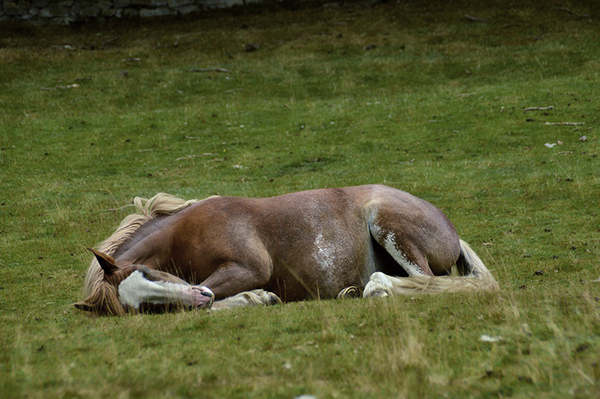
We tend to assume that a horse turned out permanently is living the ‘life of Riley’ (definition: a luxurious or carefree existence). However, this may not always be the case.
In the case of retired paddock horses, lying time can be an important sign of whether the horse is experiencing joint pain or not.
It’s unlikely that you’d ever know just how much your horse lies down, at least not without constant video surveillance, which would be rare away from stables.
Yet by using a sensor to record how many hours and minutes per day your horse is lying down, you can start to guauge whether they are getting sufficient deep cycle, REM (rapid eye movement) sleep.
Why is REM Sleep so Important?
Healthy horses need to spend certain amount of time sleeping while lying down, either on their side in ‘recumbent sleep’, or resting on their chests in ‘sternal sleep’.
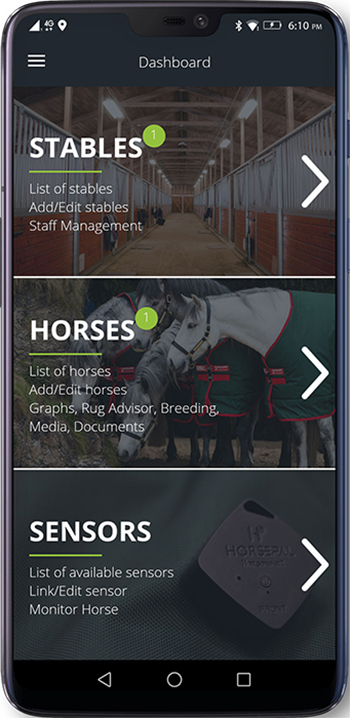
It’s only when lying down that they’re getting REM sleep. This is believed to be essential for many aspects of learning and memory, as well as physical and emotional health.
Most horses average about 2 hours lying time per day. About 20 minutes of this is REM sleep.
This deep sleep only happens when they are in total relaxation. This can only happen when the horse is sleeping with its head resting on the ground. At this point, no muscles are activated.
When horses sleep while standing, by engaging their ‘stay apparatus’, they do not let their heads hang down. Far from it: they remain prepared to react and escape danger.
In very bad conditions, horses may go for up to 4 days before lack of REM sleep becomes a problem for them.
A sensor will not reveal whether a horse had its nose or head on the ground, but we can be reasonably sure that if they are regularly lying down for less than 2 hours per day, they’re unlikely to getting enough REM sleep.
Can Chronic Arthritis Affect REM Sleep?
Lying down to sleep deeply doesn’t always happen, of course, due to disturbing conditions such as extreme weather, or a horse’s physical problems or illness.
In a PhD study, I measured the lying time of horses with carpal (knee) and tarsal (hock) arthritis associated with angular limb deformities with movement sensors.
(Sensors designed for use with large farm animals were used, as these were scientifically validated – rug sensors were only just coming onto the market at the time.)
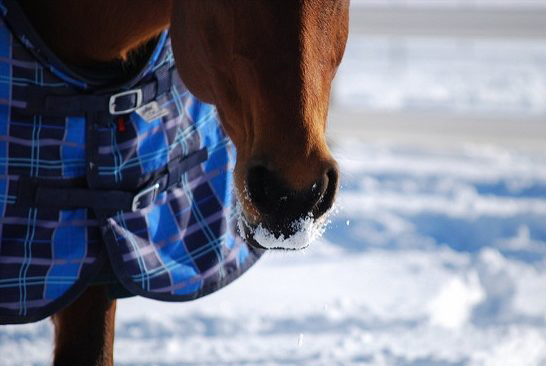
What I learned surprised me.
In winter, during periods of severe frost and some snow, the most affected horses were lying down for only half as long as their healthy herd mates.
One arthritic mare went for just under 4 days without lying down. At that point, the weather improved, and she quickly caught up on her lying time (which was still lower than that of her herd mates).
(The results were published in a journal article – you can read the abstract here.)
This study took place in Australia, where severe winter conditions are usually brief. How well will your horse be coping in colder parts of the world?
Measuring Lying Time with Rug Sensors
So if you’ve not already guessed, you can use your rug sensor to check how long your horse is lying down for.
You’ll need to measure the lying time over at least 4 days, and repeat this in different kinds of weather. You can then find an average daily lying time for your horse in different conditions.
If you have more than one sensor, you can check what different horses in the same herd at doing at the same time. More active or dominant herd members can affect the rest periods of others in the herd, so this information can be useful to know.
Using objective data, you can tell whether your horse is lying down for the desirable 1.5 to 2 hours per day, at least once every 4 days. If so, you can be sure they’re getting enough sternal and recumbent rest for their valuable REM sleep.
If they’re lying down for a lot less time than that, then you need to ask why. It may be a temporary reaction to passing bad weather, and you find that everything is fine next time you check.
But if this is a retired horse and you learn that they’re simply not lying down very often, no matter what the weather, then you need to investigate. Something could be negatively affecting their quality of life.
And If You Don’t Rug Your Horse?
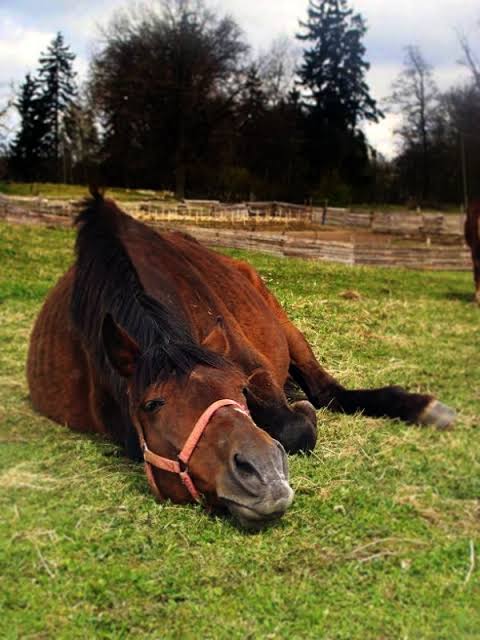
You don’t have to do this in winter, although that’s when you’re most likely to see a difference. You can still do this even if your horse doesn’t wear a rug – just follow these steps.
- Fit the horse with two hind exercise boots. My recommendation is to put the boots on the hind limbs, as the horse is less likely to fuss with them.
- Attach the sensor unit to one boot. Position the sensor so it’s against the outside of the leg, not the inside, so that it’s less likely to be knocked against the opposite leg.
- Use duck/duct tape to hold it in place. Extra tape over the sensor will provide more waterproofing and stop it being knocked off.
- Check the boots at least twice a day, to check for any rubs, to reposition the sensor, or to replace damaged tape.
- Make sure your horse is completely comfortable with wearing the boots in the paddock before you introduce the sensor. You will only get strange readings if your horse is kicking and bucking!
Help me to write more educational articles like this one
What next?
It’s not necessarily a welfare issue if your horse is getting less sternal or recumbent rest, as individuals do vary. However, if your horse is getting a lot less lying time than their herd mates (yes, it’s a good idea to check more than one horse in the paddock), there could be a problem.
Possibly, after talking to your vet, you could adminster a therapeutic dose of bute for a few days, and see what changes.
If your horse’s sleep is being affected by stiff, painful joints, their lying time may increase once they have received anti-inflammatories.
This will confirm that you need to do more to keep them comfortable, especially if your area is prone to heavy winter weather.
Just rugging them may not be enough.
References
- Burns, K. Many Causes Contribute to Sleep Disorders in Horses. AVMA Journals website; 2016.
- Duncan, P. Time-Budgets of Carmargue Horses: II. Time Budgets of Adult Horse and Weaned Sub-Adults. Behavior, 1980, 72, 72: 26-49.
- Fuchs, C. et al. Narcolepsy: Do Adult Horses Really Suffer from a Neurological Disorder or Rather from a Recumbent Sleep Deprivation/Rapid Eye Movement (REM)-Sleep Deficiency? Equine Vet. J., 48 (S50), 2016
- Fuchs. C. et al. Equine Recumbent Sleep Deprivation: Effects on Mental and Physical Health. 14th International Equitation Science Conference, Rome. 2018
- May, ME. et al., Nociceptor and Age Specific Eeffects of REM Sleep Deprivation Induced Hyperalgesia, Behav Brain Res. 2005 Apr 15;159(1):89-94
